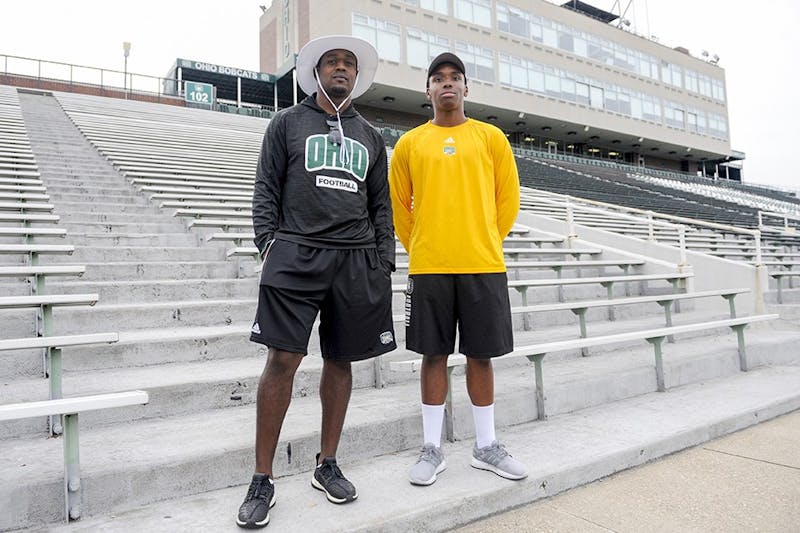

Samantha Güt
02.12.17
Roderick McDavis began his presidency at Ohio University in 2004 with several goals, but one of those was closer to his heart than others: increasing diversity at OU.
In addition to being the second alumnus to fill the office of OU’s president, McDavis is also the first African-American to lead the university. For many students and employees of color at OU, McDavis’ presidency was a point of inspiration.
“I liken his presidency in many ways to Barack Obama. He’s the first black president of Ohio University. It took us 200 years, but we finally had one. And Obama, Barack Obama, was the first black president of the United States,” Winsome Chunnu-Brayda, associate director of OU’s Multicultural Center, said. “Particularly to our black male students, we’ve often heard them comment on how much they admire him, and they see him as this sort of mentor that they would like to emulate.”
The number of African-American students on the Athens campus has doubled in the almost-13 years McDavis has served as president, increasing from about 650 students in 2004 to more than 1,200 in 2015, according to the most recent university data available. The percentage of minority students, including African-Americans, Asian-Americans and Hispanics, have all increased during McDavis’ presidency as well.
As of 2015, white students accounted for about 78 percent of the nearly 23,000 students on the Athens campus. In 2004, white students accounted for 89 percent of about 17,500 total students.
While universities across the country strive to create more diverse campuses, McDavis’ efforts stand out, according to an analysis by The Chronicle of Higher Education. The Chronicle found McDavis was “one of five African-American leaders of predominantly white institutions who have seen the enrollment of black students rise by more than 100 percent during their tenures,” according to the August 2016 article.
Alexis Apparicio and Nile Harris, president and vice president of OU’s chapter of the NAACP, respectively, recall McDavis as a support system they would look toward when diversity-related issues arose on campus.
In 2015, after the defacement of a #BlackLivesMatter message on OU’s graffiti wall and an NAACP-organized rally in support of students at the University of Missouri, McDavis initiated monthly meetings with multicultural student leaders, including those from the Black Student Union and OU’s Student Senate. One such meeting with Apparicio, who previously served on Student Senate, included demands from Student Senate to ensure more diverse student leaders and faculty members, which McDavis noted in a list.
“He carried that list with him all the time,” Apparicio said, “and he would check in with us every month or so, sometimes even more frequent (than that).”
For Harris and other students of color, one-on-one meetings with McDavis are what will stand out most to them once he leaves OU.
“There were moments where we would bring in McDavis … and just talk about his experience and how he got to where he is,” Harris said. “Those stories were really powerful, and they helped people to kind of actualize their own dreams and feel like those things were definitely attainable.”
Landing Page
OU President Roderick McDavis is leaving February 17. The Post looks back at his time as Ohio's president. Click this box to read the rest of the stories from this issue.